This article brings you what is Jinja2 in python? how to use? , has certain reference value, friends in need can refer to it, I hope it will be helpful to you.
What is Jinja2
Jinja2 is the next widely used template engine in Python. Its design ideas are derived from Django’s template engine and expanded Its syntax and set of powerful features. The most significant one is the addition of sandbox execution capabilities and optional automatic escaping capabilities, which are very important for the security of most applications.
Based on unicode and can run on versions after python2.4, including python3.
How to use Jinja2
To use Jinja2 template, you need to import the render_template function from flask, and then call the render_template function in the routing function. The first parameter of this function is Template name. Templates are saved in the directory by default.
The simplest template file is an ordinary HTML file, but static files are meaningless. You need to pass in the response parameters when accessing the route, and display them in the browser in a certain style in the template. Therefore, You need to use the keyword parameters of the render_template function. Suppose there is a template file hello.html, the code is as follows:
<h1 id="hello-name"> hello,{{name}}.</h1>
The part enclosed by {{...}} is the template expression. When using the render_template function to call the template file hello.html, you need to specify the name value through keyword parameters.
render_template('hello.html',name='star')
When returned to the client, {{name}} will be replaced by star.
Web page output code
<h1 id="hello-star"> hello,star.</h1>
jinja2 common syntax
1.变量显示语法: {{ 变量名 }}
2. for循环:
{% for i in li%}
{% endfor %}
3. if语句
{% if user == 'westos'%}
{% elif user == 'hello' %}
{% else %}
{% endif%} Data display
# templates目录里面建立mubna.html文件
nbsp;html>
<meta>
<title>hello</title>
<p>变量:{{ name }}</p>
<p>列表:{{ li }}</p>
<p>列表元素:
{% for item in li %}
<br>{{ item }}
{% endfor %}</p>
<p>字典:{{ d }}</p>
<p>字典元素:
{{ d.a }}
{{ d['b'] }}</p>
<p>对象:{{ u }}</p>
| 用户 | 密码 |
| {{ u.name }} | {{ u.passwd }} |
from flask import Flask, render_template
app = Flask(__name__)
class User(object):
def __init__(self, name, passwd):
self.name = name
self.passwd = passwd
def __str__(self):
return "<user:>" %(self.name)
@app.route('/')
def index1():
name = "sheen is cute !!"
li = [1, 2, 4, 5]
d = dict(a=1, b=2)
u = User("westos", "passwd")
return render_template('muban.html',
name = name,
li = li,
d = d,
u = u
)
app.run()</user:>

Filter in template
The data returned by the server to the client may come from a variety of data sources. These data formats may not meet the client's needs, and the data needs to be reprocessed.
The filter needs to be placed after the template expression variable and separated from the variable by '|'. {{ vlaue|upper}} converts all English letters of value into uppercase.
Write a time filter to convert the timestamp into a string time in a specific format
from flask import Flask, render_template
import time
app = Flask(__name__)
def time_format(value,format="%Y-%m-%d %H:%M:%S"):
# 时间戳----> 元组
t_time = time.localtime(value)
# 元组 ----> 指定字符串
return time.strftime(format,t_time)
# 第一个参数是过滤器函数,第二个参数是过滤器名称
app.add_template_filter(time_format,'time_format')
@app.route('/chtime/')
def chtime():
return render_template('chtime.html',timestamp = time.time())
app.run()
# templates/目录下的chtime.html
nbsp;html>
<meta>
<title>Title</title>
时间戳
{{ timestamp }}
<br>
格式化后的时间
{{ timestamp | time_format }}

Macro operation
When writing a python program, there will be many places where the same or similar code is called. In this case, you can put the reused code into a function or class, and you only need to access the instance of the function or class to achieve code reuse. Macros are used in Jinja2 templates to prevent code redundancy.
The macros in the Jinja2 template need to be placed in {%......%}, use modifications, support parameters, and end with {% endmacro %}
If the macro is to be used multiple times To share a template file, you need to put the macro into a template file separately, and then use the {% import ....%} command to import the template
Call the macro to realize the template inheritance of the login page
## templates/目录下的macro.html
{% macro input(type, name, text ) %}
<p>
<label>{{ text }}</label>
<input>
</p>
{% endmacro %}
# # templates/目录下的login.html
{% extends "base.html" %}
{% block title %}
登陆
{% endblock %}
{% block content %}
<p>
</p><h1>登录
<small>没有账号?<a>注册</a></small>
</h1>
{# /*将表单信息提交给/login路由对应的函数进行处理, 并且提交信息的方式为post方法, 为了密码的安全性*/#}
{% endblock %}#主程序
from flask import Flask, render_template
app = Flask(__name__)
@app.route('/login/')
def login():
return render_template('login.html')
app.run()

Template inheritance
Jinja2 template has another code reuse technology, which is Template inheritance. When a template is inherited by another template, the resources of the parent template can be accessed through {{ super() }}. Inheriting a template from another template requires the extends directive. For example, the child.txt template file inherits the code from parent.txt
{% extends ‘parents.txt’ %}
After child.txt inherits from the parent.txt template, all the code in parent.txt will be automatically used, but it must be placed in
{% block xxxx%} .... {% endblock %} The code in needs to be referenced using {{super() }} in child.txt. Among them, xxxx is the name of the block
Template inheritance syntax:
1. 如何继承某个模板?
{% extends "模板名称" %}
2. 如何挖坑和填坑?
挖坑:
{% block 名称 %}
默认值
{% endblock %}
填坑:
{% block 名称 %}
{% endblock %}
3. 如何调用/继承被替代的模板?
挖坑:
{% block 名称 %}
默认值
{% endblock %}
填坑:
{% block 名称 %}
#如何继承挖坑时的默认值?
{{ super() }}
# 后面写新加的方法.
........
{% endblock %}
#templates目录下建立parent.html模板文件
nbsp;html>
{% block head %}
<meta>
<title>{% block title %}hello{% endblock %}</title>
{% endblock %}
I LOVE PYTHON! <br>
{% block body %}
Cute,{{ text }}
{% endblock %}
#templates目录下建立child.html模板文件
{% extends 'parent.html' %}
{% block title %}
{#继承挖坑时的默认值:{{ super() }}#}
{{ super() }}-{{ text }}
{% endblock %}
{% block body %}
<h1 id="super-Beauty">{{ super() }},Beauty!</h1>
{% endblock %}
# 主程序
from flask import Flask,render_template
app = Flask(__name__)
@app.route('/')
def index():
return render_template('child.html',text = 'sheen')
if __name__ == '__main__':
app.run()

The above is the detailed content of What is Jinja2 in python? how to use?. For more information, please follow other related articles on the PHP Chinese website!
 html5的div一行可以放两个吗Apr 25, 2022 pm 05:32 PM
html5的div一行可以放两个吗Apr 25, 2022 pm 05:32 PMhtml5的div元素默认一行不可以放两个。div是一个块级元素,一个元素会独占一行,两个div默认无法在同一行显示;但可以通过给div元素添加“display:inline;”样式,将其转为行内元素,就可以实现多个div在同一行显示了。
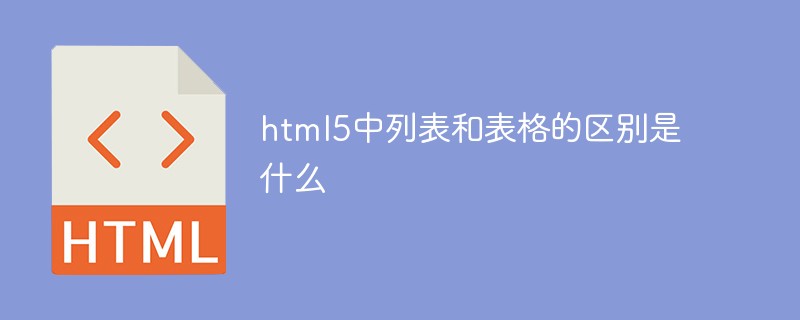 html5中列表和表格的区别是什么Apr 28, 2022 pm 01:58 PM
html5中列表和表格的区别是什么Apr 28, 2022 pm 01:58 PMhtml5中列表和表格的区别:1、表格主要是用于显示数据的,而列表主要是用于给数据进行布局;2、表格是使用table标签配合tr、td、th等标签进行定义的,列表是利用li标签配合ol、ul等标签进行定义的。
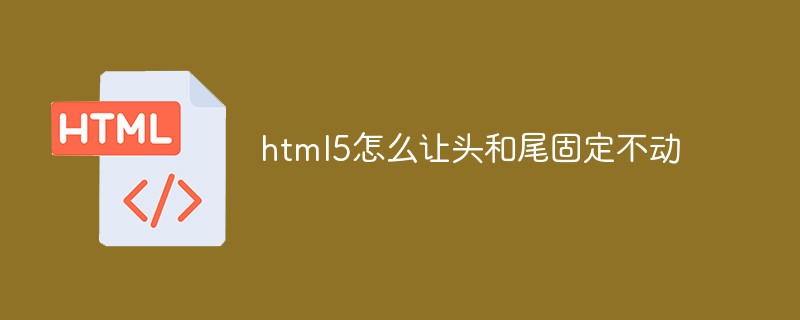 html5怎么让头和尾固定不动Apr 25, 2022 pm 02:30 PM
html5怎么让头和尾固定不动Apr 25, 2022 pm 02:30 PM固定方法:1、使用header标签定义文档头部内容,并添加“position:fixed;top:0;”样式让其固定不动;2、使用footer标签定义尾部内容,并添加“position: fixed;bottom: 0;”样式让其固定不动。
 HTML5中画布标签是什么May 18, 2022 pm 04:55 PM
HTML5中画布标签是什么May 18, 2022 pm 04:55 PMHTML5中画布标签是“<canvas>”。canvas标签用于图形的绘制,它只是一个矩形的图形容器,绘制图形必须通过脚本(通常是JavaScript)来完成;开发者可利用多种js方法来在canvas中绘制路径、盒、圆、字符以及添加图像等。
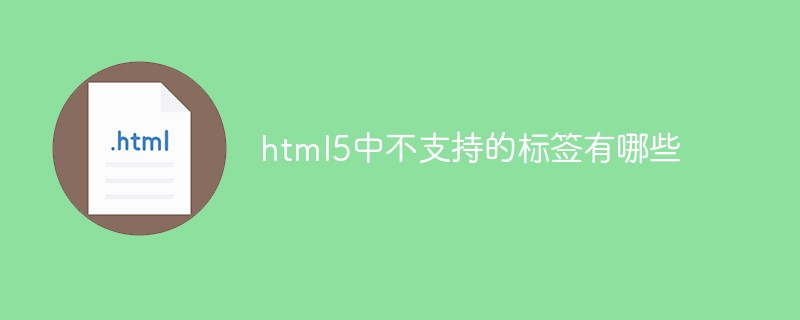 html5中不支持的标签有哪些Mar 17, 2022 pm 05:43 PM
html5中不支持的标签有哪些Mar 17, 2022 pm 05:43 PMhtml5中不支持的标签有:1、acronym,用于定义首字母缩写,可用abbr替代;2、basefont,可利用css样式替代;3、applet,可用object替代;4、dir,定义目录列表,可用ul替代;5、big,定义大号文本等等。
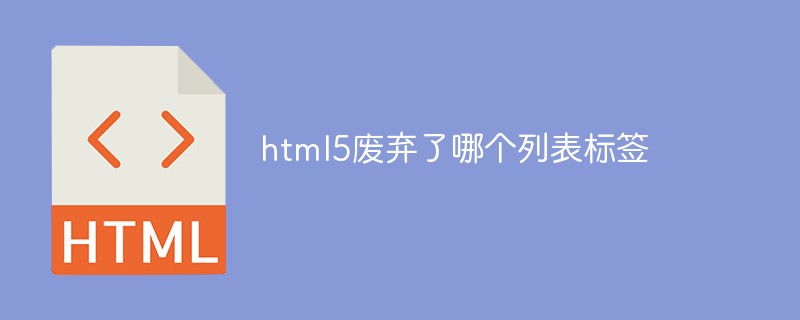 html5废弃了哪个列表标签Jun 01, 2022 pm 06:32 PM
html5废弃了哪个列表标签Jun 01, 2022 pm 06:32 PMhtml5废弃了dir列表标签。dir标签被用来定义目录列表,一般和li标签配合使用,在dir标签对中通过li标签来设置列表项,语法“<dir><li>列表项值</li>...</dir>”。HTML5已经不支持dir,可使用ul标签取代。
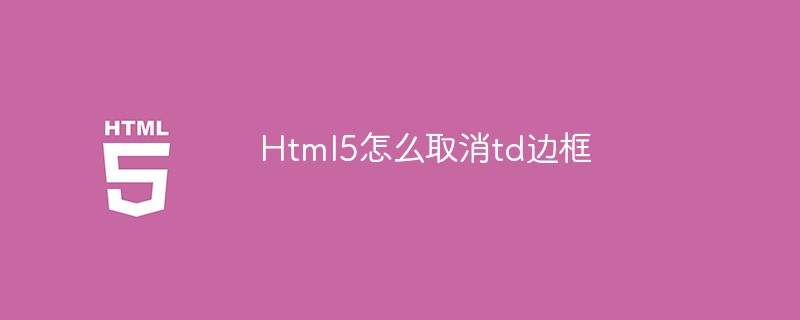 Html5怎么取消td边框May 18, 2022 pm 06:57 PM
Html5怎么取消td边框May 18, 2022 pm 06:57 PM3种取消方法:1、给td元素添加“border:none”无边框样式即可,语法“td{border:none}”。2、给td元素添加“border:0”样式,语法“td{border:0;}”,将td边框的宽度设置为0即可。3、给td元素添加“border:transparent”样式,语法“td{border:transparent;}”,将td边框的颜色设置为透明即可。
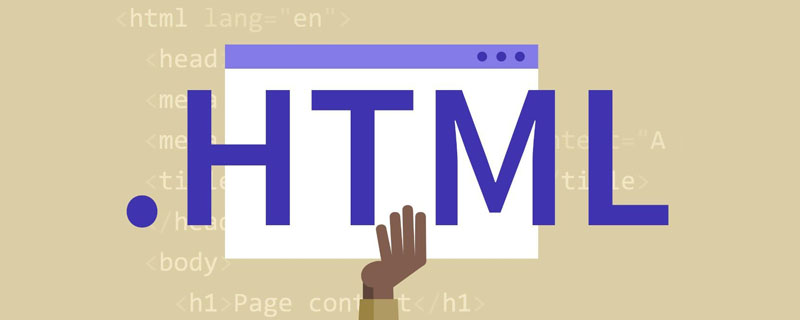 html5是什么意思Apr 26, 2021 pm 03:02 PM
html5是什么意思Apr 26, 2021 pm 03:02 PMhtml5是指超文本标记语言(HTML)的第五次重大修改,即第5代HTML。HTML5是Web中核心语言HTML的规范,用户使用任何手段进行网页浏览时看到的内容原本都是HTML格式的,在浏览器中通过一些技术处理将其转换成为了可识别的信息。HTML5由不同的技术构成,其在互联网中得到了非常广泛的应用,提供更多增强网络应用的标准机。


Hot AI Tools

Undresser.AI Undress
AI-powered app for creating realistic nude photos

AI Clothes Remover
Online AI tool for removing clothes from photos.

Undress AI Tool
Undress images for free

Clothoff.io
AI clothes remover

AI Hentai Generator
Generate AI Hentai for free.

Hot Article

Hot Tools

MantisBT
Mantis is an easy-to-deploy web-based defect tracking tool designed to aid in product defect tracking. It requires PHP, MySQL and a web server. Check out our demo and hosting services.

Atom editor mac version download
The most popular open source editor

Dreamweaver Mac version
Visual web development tools

Notepad++7.3.1
Easy-to-use and free code editor

SublimeText3 English version
Recommended: Win version, supports code prompts!







